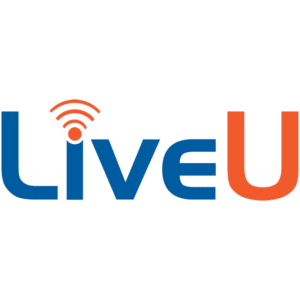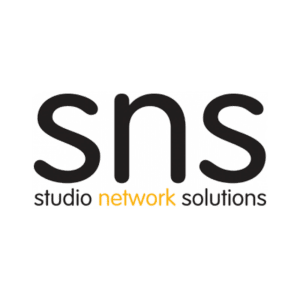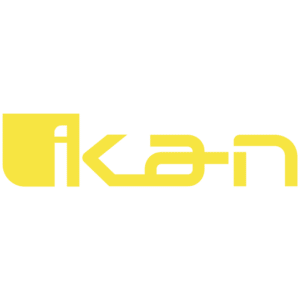Broadcast2Post Podcast by Key Code Media
The remote post production conversation has matured. What began as an emergency pivot during the 2020 pandemic is now a long-term strategy and, for many, a competitive advantage. Creative teams are now looking beyond remote access to rethink the very structure of their post pipelines.
As a systems integrator working with agencies, broadcasters, content studios, and in-house corporate teams, Key Code Media has seen how remote post evolves differently depending on organizational goals. But some truths are universal: successful deployments prioritize editorial experience, infrastructure stability, and cost transparency.
This blog and podcast is a roadmap for engineers designing or re-evaluating remote post environments in 2025. Let’s break it down.
1) Remote Post Today, Conceptually
“Remote post” used to mean editing over a VPN or shipping drives. Today, it’s a hybrid model involving cloud-native workflows, remote desktop infrastructure, intelligent file sharing, and AI-driven services, all working in concert. And in 2025, this approach isn’t just for global teams or Hollywood studios, it’s becoming the norm across enterprise marketing departments, trailer vendors, and digital agencies.
The technology stack behind remote post has made massive strides in the last five years:
- Cloud storage no longer requires syncing or downloading to edit
- WAN optimization and pixel streaming make it viable to run an Avid or Resolve system from 1,000 miles away
- Remote access tools now offer secure, scalable connections with near-native responsiveness
- AI tools assist not only with tagging and transcription, but also with rough cuts, asset reuse, and content moderation
Most importantly, teams are no longer choosing between “on-prem” or “cloud.” They’re building hybrid infrastructures that give them both local control and cloud scalability.
Remote post today is about designing workflows that are fast, flexible, and editor-approved, wherever the editor is.
2) What’s Working and What’s Not
The Wins
Organizations that have embraced remote post thoughtfully are seeing measurable improvements: better talent retention, more agile creative cycles, and lower infrastructure costs. What sets these teams apart? They treat remote post as a workflow- not just a connection.
Standardization is key. The tools are important, but success comes from integrating them with MAMs, permissions, naming conventions, and user training.
The Pain Points
Even in mature deployments, the struggles are real. We often see teams underestimating bandwidth requirements, assuming editors will adopt new workflows without handholding, or bolting on too many tools without considering UX. Without proper planning, even the best tech stack can create more friction than function.
What’s Working:
- Streaming file systems like LucidLink have redefined how teams access and collaborate on media.
- Virtual desktop environments like Teradici/HP Anyware offer high-performance access to edit systems without the cost or complexity of full cloud NLEs.
- Review/delivery tools like MediaSilo and Frame.io reduce feedback cycles and improve remote client workflows.
What’s Not:
- Overcomplicating the stack with overlapping tools that confuse users and increase support tickets
- Inconsistent internet at the user level, which is often outside your control but impacts everything
- Editor pushback – remote is only as good as the editorial experience. If editors hate it, they won’t use it
3) The Hidden Cost of Remote Post and How To Avoid It
On the surface, remote post feels like a cost-saving opportunity- less travel, fewer drives, and lower facility usage. But there are hidden costs that can quickly inflate your budget if you’re not careful.
Licensing creep is one of the first traps: as you spin up more remote users, you’re adding not just NLE seats but storage licenses, desktop virtualization seats, review platform accounts, and more. These costs aren’t always obvious during procurement.
Cloud egress fees are another big one. Cloud storage may seem cheap until you start pulling terabytes of footage out every week. Engineers need to build workflows that minimize egress, either by editing in-place or caching intelligently.
Then there’s people cost, not just training and onboarding, but managing user expectations, platform stability, and security hygiene. Remote post solutions need documentation, support protocols, and ideally, a workflow playbook that scales across your team.
Best practice: Run a total cost of ownership (TCO) estimate for 6–12 months before deployment. This includes software, cloud services, engineering time, training, and support tickets.
4) Product Rapidfire – Where These Tools Fit
Let’s talk tools. The right solution depends on the size, budget, and style of your team. Here’s a rapid-fire breakdown of what’s in the market and where each tool makes sense.
| Tool | Best For |
| LucidLink or Suite Studios | These tools provides shared media workspaces that enable fully remote editorial teams to collaborate as if they were working on-prem, accessing high-resolution media directly from the cloud, in real time. |
| Facilis Fastcache | A great feature for Facilis Shared Storage customers, Fastcache provides LucidLink-like functionality while working from on-premise storage instead of the cloud. |
| SNS Nomad | SNS Nomad makes remote editing possible by automatically delivering proxy media and project files from a local EVO shared storage to editors working offsite. |
| Editshare MediaSilo | Good for remote review and approval workflows, giving teams a secure way to share cuts, gather feedback, and manage versions |
| Iodyne Pro Data | Iodyne Pro Data delivers ultra-fast, encrypted Thunderbolt storage with digital asset tagging- ideal for remote editors who need media access without relying on internet connectivity. |
| HP Anyware or Jump Desktop | These tools are good for secure, high-performance remote access to workstations and virtual machines, allowing editors and artists to work from anywhere as if they were on-site. Jump Desktop is our go-to for Apple products while HP Anyware is fantastic for Windows OS computers. |
| StorageDNA | StorageDNA Fabric is good for managing, moving, monitoring and automating media workflows across on-premise and cloud storage. |
Each tool fits into a broader architecture- it’s not about choosing one silver bullet. It’s about matching tools to use cases: do you need instant access to media? High-performance editorial access? Review-only workflows? Start with your team’s needs, then build up.
5) Futureproofing Remote Workflows
The tech is evolving faster than ever and not all teams are keeping up. To futureproof your remote post environment, you need to think beyond your next deployment.
Key Trends to Watch:
- AI Workflows: Generative AI and machine learning are enhancing tagging, rough cuts, localization, transcription, and even client-facing tools. As these tools become native to your edit suite, your infrastructure must support GPU/CPU-heavy processing, even remotely.
- Microservices Architecture: Legacy monolithic MAMs are giving way to modular, API-connected microservices. This lets you build workflows that are tailor-fit and easier to update as tech changes.
- USD (Universal Scene Description): While still gaining traction outside of VFX/animation, USD is likely to impact post teams who touch virtual production or 3D pipelines. Think of it as the “XML of immersive content.”
Futureproofing isn’t about guessing the next big thing. It’s about building flexible workflows and hiring teams who aren’t afraid of change. Choose tools with open APIs, flexible deployment models, and strong roadmaps. Invest in training and documentation so your team can evolve alongside the technology.
Final Thoughts: Engineering with Intention
Remote post is not just a feature- it’s a strategy. And the best strategies are engineered with clarity, tested with rigor, and deployed with empathy for the users on the front lines.
At Key Code Media, we help creative teams move from “we need remote” to “this just works.” Whether you’re building from scratch or evolving a legacy workflow, our engineers can help map the journey- from planning and procurement to commissioning, training, and long-term support.
If you’re evaluating remote post workflows, let’s talk. We’ll help you see the full picture and engineer the right solution for your team.
Learn more about Remote Post Production solutions at Key Code Media.
BROADCAST2POST SPONSORS
Big thanks to our annual partner sponsors for the podcast!







